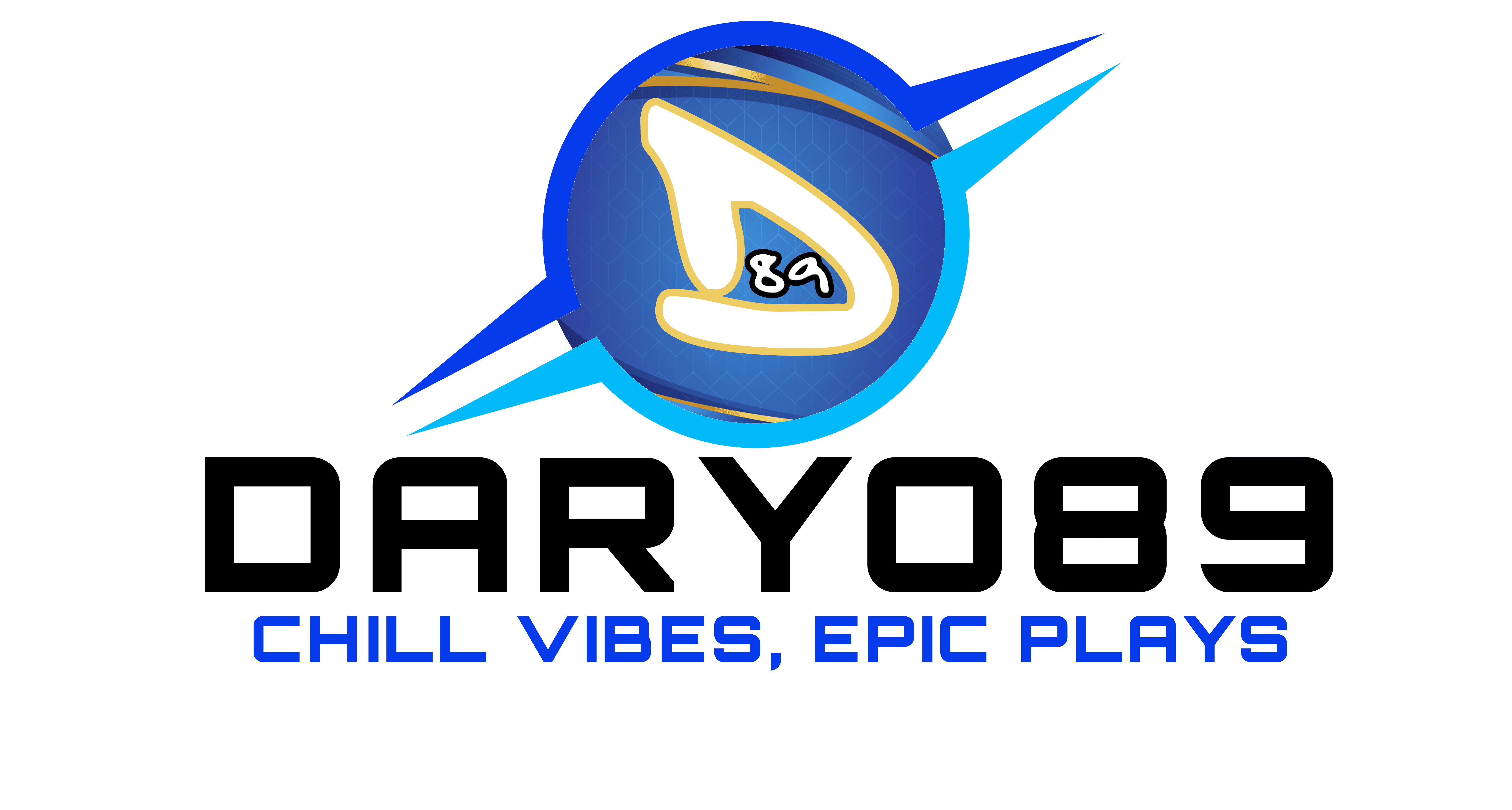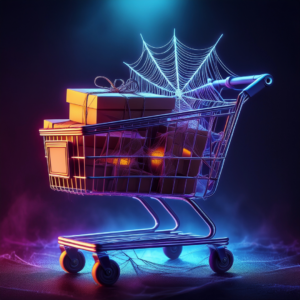Beyond Subs & Bits: 7 Creative Ways Streamers Can Make Real Money in 2025
1. Introduction: Beyond the Basics – Diversifying Your Stream Income in 2025
The digital landscape for content creators is in constant flux. As the creator economy matures, relying solely on traditional monetization methods like basic platform subscriptions and direct donations is proving increasingly insufficient for sustainable growth and financial stability. The trend towards establishing a multi-platform presence and cultivating diversified income streams is not just advantageous, it’s becoming essential for long-term success. Building a robust monetization strategy requires looking beyond the tip jar and standard sub button.
Diversifying revenue streams offers significant benefits. It creates greater financial stability, reducing dependency on the fluctuating algorithms or policy changes of any single platform. Furthermore, offering varied products and services allows streamers to connect with their audience on deeper levels, catering to different interests and willingness to pay. This approach leverages various facets of a streamer’s brand, skills, and personality, unlocking new avenues for growth.
This guide delves into actionable, creative monetization strategies poised for relevance in 2025, moving past the commonly discussed fundamentals. It explores the practical implementation of affiliate marketing, physical and digital merchandise creation, securing strategic brand sponsorships, monetizing expertise through digital products and coaching, developing exclusive membership tiers, leveraging native platform features creatively, and implementing interactive income methods. Standard platform subscriptions (like base-level Twitch tiers) and simple, direct donation links are intentionally excluded to focus on more advanced and diversified tactics.
The context of 2025 is critical. Streaming platforms are continually evolving their toolsets. Twitch, for example, has signaled intentions to open up monetization tools more broadly to creators in 2025, potentially lowering barriers to entry for some features. New platforms like Kick continue to challenge established players with different economic models , while YouTube consistently adds features like integrated shopping and enhanced membership perks. Simultaneously, broader trends like the rise of interactive commerce and shoppable live streams are reshaping how creators can integrate sales directly into their content. Understanding these dynamics is key to building a future-proof monetization strategy.
2. Strategy 1: Affiliate Marketing – Earning Commissions Authentically
Affiliate marketing provides streamers with a method to generate income by partnering with businesses and promoting their products or services. This involves sharing unique affiliate links or discount codes; when a viewer makes a purchase through that link or code, the streamer earns a commission. These commissions typically range from 5% to 30%, although rates can vary significantly depending on the program and product category. As a potential source of passive revenue, affiliate marketing remains highly relevant for streamers in 2025, allowing them to earn income even when not actively streaming.
Finding Your Niche & Programs
The cornerstone of successful affiliate marketing is authenticity. Promoting products or services that the streamer genuinely uses, believes in, and that align with their content and audience interests is crucial for maintaining viewer trust. Viewers can quickly discern disingenuous promotions, which can damage the creator-audience relationship.
A vast array of affiliate programs caters specifically to streamers and their audiences:
- Gaming Hardware/Peripherals: Numerous well-known brands offer programs, including Logitech (4-10% commission, 30-day cookie ), Razer (1-20% commission, 30-day cookie ), Secretlab (up to 12% commission, 7-day cookie ), Origin PC (2% commission, 30-day cookie, via CJ Affiliate ), Astro Gaming (5% commission, 30-day cookie ), SteelSeries , HyperX , Final Mouse (25% commission, 30-day cookie ), and ModdedZone (10% commission, 90-day cookie ).
- Game Keys/Platforms: Marketplaces and rental services provide opportunities, such as Green Man Gaming (2-5% commission, 30-day cookie ), Kinguin (5% commission, 30-day cookie, potential recurring revenue ), Humble Bundle (15% commission ), GameFly ($5-$15 per signup or 10% per sale, 25-30 day cookie ), CDKeys , and Fanatical.
- Streaming Software/Tools: Services offering overlays, alerts, or performance tools sometimes have programs, like Nerd or Die (10-30% commission ) and Streamplay (20-30% commission, 30-day cookie ).
- General Marketplaces & Platform Programs: Broad marketplaces allow promotion of diverse products. Amazon Associates is a popular starting point, offering varying commissions (e.g., 1-2% on games, up to 20% on other categories) but with a short 24-hour cookie duration. Twitch itself offers a 5% revenue share on game sales initiated through a streamer’s channel page.
- Services & Niche Programs: Beyond gaming, opportunities exist with services like Pawns.app (passive income app, 20% lifetime recurring commission, 90-day cookie ), survey/reward sites like Swagbucks ($2.20/signup, 30-day cookie ), YouGov ($3/lead ), PrizeRebel (up to 30% recurring commission ), and Toluna ($1.20/registration, 45-day cookie ), or specialized tools like Zygor Guides (gaming guides, 50% commission, 60-day cookie, recurring potential ) and ExitLag.
Streamers can find programs directly on brand websites or through affiliate networks like CJ Affiliate and Amazon Associates.
Implementation Best Practices
Effective implementation involves strategic placement and transparent communication. Links and codes can be placed in Twitch channel panels , YouTube video descriptions , pinned chat messages, social media bios and posts , or integrated visually through on-stream overlays or widgets, potentially managed via tools like StreamElements.
Crucially, streamers must clearly disclose their affiliate relationships. Transparency builds trust; failing to disclose can violate platform policies and erode audience confidence. Integrating promotions naturally is key. Instead of abrupt sales pitches, streamers can mention the gear they use on stream , discuss products organically, or create dedicated review content. Tools like link shorteners can make links cleaner, while more advanced (often enterprise-focused) platforms like Upfluence or Tracknow offer features for managing multiple affiliate partnerships.
Pros & Cons Analysis
Affiliate marketing offers several advantages, including the potential for passive income generation , a relatively low barrier to entry compared to creating products, and a wide variety of programs available across many niches. However, it also presents challenges. Success hinges on audience trust and engagement. Conversion rates can be unpredictable, and commission structures vary dramatically. Over-promoting affiliate products can lead to audience fatigue. Furthermore, the duration of tracking cookies (the window during which a sale is attributed to the streamer) differs significantly between programs, impacting potential earnings.
Platform Integration Examples
Major streaming platforms facilitate affiliate marketing. Twitch panels provide a persistent space for links. YouTube descriptions, end screens, and cards offer multiple opportunities to direct viewers to affiliate products. Extensions on Twitch could potentially offer more interactive ways to showcase affiliate items.
The sheer breadth of available affiliate programs, spanning hardware, software, games, general goods, and niche services , signifies that streamers are not limited to promoting only gaming-related items. By considering their audience’s broader interests and their own authentic preferences, creators can tap into diverse revenue streams beyond the obvious choices. This necessitates a strategic approach, thinking holistically about the intersection of brand, content, and audience needs.
Moreover, the significant differences in commission rates (from 1% to 50% ) and cookie durations (from 24 hours to 90 days ) underscore that a scattergun approach is unlikely to be optimal. Streamers must strategically evaluate programs, weighing the commission percentage against the product’s relevance, price point, likelihood of conversion within the cookie window, and overall alignment with their brand. A high commission on an unpopular or irrelevant product yields nothing.
Finally, the existence of programs offering recurring commissions presents an avenue for building more stable, predictable affiliate income compared to relying solely on one-time sale commissions. For streamers prioritizing financial stability, investigating and potentially prioritizing programs with recurring models could be a valuable long-term strategy, even if the initial commission percentage seems lower than some one-off offers.
3. Strategy 2: Merch Mania – Building Your Brand with Physical & Digital Goods
Merchandise serves a dual function for streamers: it acts as a direct revenue stream while simultaneously strengthening brand identity and fostering a deeper connection with the community. Offering tangible or digital items allows fans to express their support and feel a closer tie to the creator’s brand.
Physical Merch – The POD Revolution
For most streamers, Print-on-Demand (POD) has revolutionized physical merchandise. This model eliminates the need for upfront investment in inventory, storage, and handling production or shipping. When a customer places an order, the POD provider prints the design on the chosen product and ships it directly to the customer. This significantly lowers the barrier to entry and financial risk.
Navigating the POD landscape requires understanding the different platforms available. Some function as companies that integrate with a streamer’s own store (e.g., built on Shopify, WooCommerce, or creator platforms like Fourthwall), while others are marketplaces where creators upload designs and the platform handles the entire storefront and transaction.
| POD Platform | Best Known For | Pricing Model | Key Integrations | Key Considerations | Type | Sources |
|---|---|---|---|---|---|---|
| Printify | Vast supplier network, competitive pricing | Free plan; Premium ($29/mo) for product discounts | Shopify, Etsy, WooCommerce, TikTok, eBay, BigCommerce, PrestaShop | Quality varies by provider, requires testing; Good product variety (~900 items) | Company | |
| Printful | High-quality printing, user-friendly interface | Per-item base cost + optional fees; Free plan available | Shopify, Etsy, WooCommerce, Wix, Squarespace, BigCommerce, Amazon, TikTok | Generally higher base cost but consistent quality; Good product range (~374 items) | Company | |
| Fourthwall | All-in-one creator platform, competitive apparel cost | Free to use; 5% transaction fee on sales | YouTube Merch Shelf, TikTok Shop, Twitch Gifting, Integrated Storefront Builder | Strong creator focus, includes digital products & memberships; ~250+ products, eco-friendly options | Company/Platform | |
| Gelato | Global printing network, good for posters/prints | Per-item base cost; Free plan available | Shopify, Etsy, WooCommerce, Wix, Squarespace, BigCommerce, Amazon, TikTok | Optimized for global fulfillment, fast turnaround for prints; Growing apparel range | Company | |
| Sellfy | Easy-to-use platform for digital & physical goods | Monthly subscription plans; 0% transaction fees | Integrated storefront; Limited external integrations mentioned | Very simple setup, good for beginners; Also strong for digital products | Company/Platform | |
| Spring (Teespring) | Social media integration (YouTube, TikTok, Twitch) | Free to use; Base cost deducted from sale price | YouTube Merch Shelf, TikTok, Twitch, Discord, Google Shopping | Easy setup for social creators; Handles storefront & fulfillment | Marketplace/Platform | |
| Redbubble/Teepublic | Large existing marketplaces, organic traffic potential | Free to upload; Artist receives royalty per sale | Standalone Marketplaces | Easy entry, handles everything but design; Lower profit margins, less brand control, good for trending designs | Marketplace |
Common physical product ideas include apparel like T-shirts and hoodies, accessories such as phone cases, tote bags, and stickers, and home goods like mugs.
Digital Merch – High Margins, Easy Delivery
Digital merchandise offers compelling advantages: production costs are often minimal to non-existent after initial creation, delivery is instantaneous, and scalability is virtually unlimited. This category leverages a streamer’s digital skills or community-specific needs.
Popular digital product ideas include:
- Stream Assets: Custom gaming overlays, chat emotes, badges, screen backgrounds, sound alerts.
- Templates & Design Assets: Social media templates, video editing presets, graphic design elements, fonts.
- Informational Products: Downloadable guides, eBooks, checklists, tutorials related to the streamer’s niche.
- Creative Assets: Stock photos, music files for use by other creators.
Platforms suitable for selling digital goods include integrated solutions like Fourthwall , marketplaces focused on creative goods like Etsy , or direct-to-fan platforms like Gumroad and Ko-fi (which also supports digital sales alongside donations).
Designing & Marketing Your Merch
Effective merch requires designs that resonate with the streamer’s brand, inside jokes, or community identity. Many POD platforms offer mockup generators to visualize products. Promotion is key: showcase merch during streams, post about it on social media, and utilize platform integrations like merch shelves where available.
Pros & Cons Analysis
Merchandise strengthens brand identity and fan loyalty , offering supporters a tangible or digital way to connect. Digital products boast particularly high profit margins , while POD significantly lowers the risk for physical items. However, creating compelling designs requires effort or cost. Consistent marketing is necessary to drive sales. For physical goods, print quality can vary between POD providers, requiring careful selection and potentially sample orders. While POD platforms often handle customer service, some level of oversight may still be needed.
Platform Integration
Major platforms offer features to promote merch. Twitch and YouTube provide integrated Merch Shelves that display products below streams or videos. Platforms like Fourthwall offer deeply integrated storefronts , and tools like Spring are designed for seamless social media integration.
The distinction between POD Companies (like Printify or Printful) and POD Sites (like Redbubble or Teepublic) represents a fundamental strategic decision. Opting for a POD Company grants greater control over branding, customer experience, and potentially higher profit margins, but necessitates setting up and managing an independent storefront (often using platforms like Shopify, WooCommerce, or integrated solutions like Fourthwall). Conversely, using a POD Site simplifies the process immensely – creators only need to upload designs – and provides access to the marketplace’s existing customer base and organic traffic. However, this comes at the cost of reduced brand control, lower royalty rates, and competing alongside numerous other creators on the same platform. Streamers must weigh the trade-offs between control and convenience.
The emergence of platforms like Fourthwall, which bundle POD services, digital product sales, membership capabilities, and a storefront builder into one package , points towards a growing demand for integrated creator commerce solutions. Such platforms aim to simplify the often complex task of managing multiple distinct revenue streams, potentially reducing the need for creators to juggle separate services for merchandise, digital goods, and fan subscriptions. This trend suggests a move towards more holistic, unified platforms catering specifically to the diverse monetization needs of modern creators.
Furthermore, while physical merchandise like apparel is often the first thing streamers consider, the potential of digital merchandise should not be underestimated. Items like custom emotes, stream overlays, sound packs, or downloadable guides have minimal production costs after creation and cater directly to the digital environment and specific needs of the streaming community. Streamers possessing design skills, technical knowledge, or valuable insights related to their niche are particularly well-positioned to develop unique digital product lines that can offer high profit margins and complement their physical offerings.
4. Strategy 3: Strategic Sponsorships – Landing & Executing Brand Deals
Sponsorships represent a significant potential revenue stream for streamers, moving beyond simple shoutouts to encompass a range of integrated collaborations. Modern brand deals can include sponsored gameplay segments or challenges, dedicated streams, product placements or demonstrations within content, branded overlays or channel visuals, unboxing videos, and authentic product reviews. The growth of esports and the mainstreaming of streaming platforms like Twitch, YouTube, and TikTok have further amplified opportunities in this space.
Becoming Sponsor-Ready
Securing sponsorships requires more than just a large follower count; brands increasingly seek creators with engaged, loyal communities and high-quality, consistent content. Building a strong personal brand is foundational. This involves defining a niche, developing a unique style or personality, streaming regularly on a predictable schedule, and actively interacting with the audience to foster a sense of community. Even micro-influencers, typically defined as having audiences between 10,000 and 100,000 followers, can be attractive to brands if their audience is highly engaged and aligns well with the brand’s target demographic.
Understanding audience analytics is critical. Streamers need to leverage platform tools like Twitch Insights and YouTube Analytics to gather data on viewer demographics (age, location, gender), viewing habits, and engagement rates. This data is essential for demonstrating value to potential sponsors and tailoring pitches effectively.
Professionalism is key throughout the process. This includes creating a media kit – a document summarizing the channel, audience statistics, engagement data, content niche, and potentially past brand collaborations. Approaching brands requires clear, personalized proposals that articulate why the streamer is a good fit for the brand’s goals. Optimizing social media profiles with relevant keywords (e.g., “Streamer,” “Content Creator”) and links to the streaming channel also enhances visibility to brands. Knowing one’s value and negotiating terms fairly are also crucial aspects of a professional approach.
Finding & Pitching Brands
Streamers can proactively seek sponsorships through several channels:
- Direct Outreach: Researching brands whose products or services genuinely align with the streamer’s content and audience is paramount. Sending personalized pitches that highlight this alignment and propose creative integration ideas can be effective.
- Platform Tools: Streaming platforms are increasingly facilitating connections. Twitch has introduced a dedicated sponsorships section in the Creator Dashboard, featuring a ‘Creator Profile’ where streamers can showcase their channel details, audience metrics, and interests directly to potential sponsors. Twitch has also partnered with platforms like StreamElements to display relevant sponsorship offers directly within the streamer’s dashboard, including payout information and campaign terms. Twitch’s Bounty Board, offering opt-in campaigns, is also being integrated into this sponsorship hub.
- Third-Party Platforms: While not extensively detailed in the provided materials, various influencer marketing platforms and agencies exist that connect creators with brands (e.g., Afluencer ).
Execution & Authenticity
Once a deal is secured, successful execution focuses on seamless integration and transparency. Sponsored content should feel as natural as possible within the stream’s regular programming to avoid alienating the audience. Offering creative ideas for how the brand can be woven into the content is beneficial. Critically, streamers must clearly and conspicuously disclose sponsored segments according to platform rules and advertising regulations to maintain audience trust. Delivering consistently high-quality content and providing value to both the sponsor and the audience helps build long-term relationships that can lead to recurring deals.
Pros & Cons Analysis
Sponsorships offer the potential for substantial revenue, often exceeding other monetization methods. Successful partnerships can also enhance a streamer’s credibility and provide access to free products or early releases. However, securing deals requires significant upfront effort in building a strong brand and audience. The process of outreach, pitching, and negotiation can be time-consuming. There’s always a risk of compromising authenticity if a partnership doesn’t feel genuine. Finding the right brand fit is crucial, and the platform-integrated tools, while promising, are still evolving.
The active development of integrated sponsorship tools by platforms like Twitch, such as the Creator Profile and the StreamElements partnership , signals a significant shift. These initiatives aim to streamline the connection process between creators and brands, potentially democratizing access to sponsorships beyond the elite tier of streamers who typically work with agencies. By providing standardized ways to showcase channel data and surfacing opportunities directly in the dashboard, platforms are attempting to lower the barrier for Affiliates and Partners to engage with brands, potentially reducing reliance on cold outreach or third-party marketplaces for certain types of deals.
This move aligns with another key trend: the growing emphasis on data and professionalism in securing sponsorships. Brands are increasingly looking beyond simple follower counts, demanding demonstrable ROI and a clear understanding of the audience they are reaching. Streamers who treat their channel like a business – meticulously tracking analytics, crafting professional media kits, and clearly articulating their value proposition – are better positioned to attract and retain sponsors in this evolving landscape.
Furthermore, the viability of “micro-influencer” sponsorships offers encouragement for streamers who may not have massive audiences. Brands recognize that smaller, highly engaged communities within specific niches can be incredibly valuable. Streamers who cultivate such dedicated followings and can demonstrate strong engagement metrics within a desirable demographic should not underestimate their potential attractiveness to relevant brands, proving that quality and fit can outweigh sheer quantity.
5. Strategy 4: Monetizing Your Expertise – Selling Digital Products & Coaching
Beyond entertainment, many streamers possess valuable knowledge and skills that can be packaged and sold as digital products or services. This strategy involves identifying areas of expertise – whether it’s advanced gaming strategies, technical know-how about streaming setups, content creation techniques, graphic design abilities, or community management insights – and transforming that knowledge into marketable offerings.
Types of Digital Products & Services
The range of potential offerings is broad:
- Educational Content: This is a popular category, encompassing pre-recorded online courses, live workshops, comprehensive eBooks, focused tutorials, and downloadable guides or workbooks. Topics can range from game-specific tactics to broader skills like video editing or social media growth.
- Templates & Assets: Leveraging design or organizational skills, streamers can sell pre-made assets like stream overlays, transition screens, alert packages, emote packs , social media graphics templates, video presets, productivity spreadsheets, or planning checklists.
- Coaching & Personalized Services: Offering direct expertise through one-on-one coaching sessions, group workshops, personalized stream reviews, or consulting services provides a high-touch, premium offering.
Choosing Platforms to Host & Sell
Selecting the right platform depends on the product type and the streamer’s technical comfort:
- All-in-One Course/Membership Platforms: Solutions like Podia , Thinkific , Kajabi , Uscreen , Teachable , and Sellfy provide tools specifically designed for creating, marketing, and selling online courses, digital downloads, and sometimes memberships, often under the creator’s own branding.
- Marketplaces: For broader reach, platforms like Udemy and Skillshare host courses, though creators typically have less control over pricing and branding, and revenue is often shared or based on engagement metrics. Marketplaces like Etsy are suitable for selling templates, guides, and digital assets.
- Direct Sales Tools: Platforms like Gumroad and Fourthwall allow creators to sell digital products directly to their audience from a simple storefront.
- Coaching Delivery: Coaching can be facilitated through booking links on a personal website, integrated into membership tiers on platforms like Patreon , or using dedicated scheduling and video conferencing tools.
Creation & Marketing
Successful digital products typically start by identifying a specific problem the streamer’s audience faces or a skill they wish to acquire. Focusing on delivering high-quality, valuable content is essential. Bundling products, such as offering a workbook alongside a course, can increase perceived value. Marketing involves promoting the offerings during streams, on social media, through an email list if available, and potentially using targeted ads. Offering free introductory content or samples can attract potential buyers. Validating the product idea with the audience through polls or surveys before investing significant creation time is advisable.
Pros & Cons Analysis
Monetizing expertise offers significant advantages. Digital products generally have very high profit margins due to low replication costs. They are highly scalable – created once, they can be sold repeatedly with minimal ongoing effort, generating passive income. This strategy also positions the streamer as an expert in their field, enhancing their brand authority. The primary drawbacks include the substantial upfront time investment required for high-quality product creation. Effective marketing is crucial to drive sales in what can be a competitive space. Choosing the right platform and tools to host and sell the products also requires careful consideration.
The wide spectrum of potential digital products – from complex courses and eBooks to simpler templates and coaching sessions – suggests that almost every streamer possesses some form of monetizable expertise. It might be deep game knowledge, technical proficiency with streaming software, artistic talent for overlays and emotes, community-building strategies, or even skills learned through the process of becoming a creator. Streamers should conduct a thorough self-assessment to identify these unique knowledge assets, recognizing that value can be offered far beyond just gameplay or entertainment.
The existence of a mature market with numerous dedicated platforms for selling courses and digital goods (like Podia, Thinkific, Teachable, Gumroad) provides creators with powerful tools for building and delivering these offerings. However, this established ecosystem also signals significant competition. To succeed, streamers entering this space need a clearly defined niche, a strong value proposition, and effective marketing strategies to differentiate themselves and reach their target audience.
Coaching represents a distinct, high-value service within this strategy. While less scalable than pre-recorded courses or downloadable guides due to the direct time commitment involved , coaching allows streamers to offer personalized guidance and support at a premium price point. This suggests a potential tiered approach: offering lower-priced, scalable digital products to a broad audience, while reserving higher-priced coaching packages for the most dedicated fans seeking direct access and tailored advice.
6. Strategy 5: Exclusive Access – Tiered Memberships & Community Hubs
Moving beyond the standard perks associated with basic platform subscriptions (like Twitch Tier 1 emotes or YouTube badges), creators can build dedicated membership programs offering substantial, exclusive value. The goal is to provide compelling, ongoing benefits that motivate fans to commit to recurring monthly payments, fostering a core community of highly engaged supporters.
Crafting Valuable Perks
The key to a successful membership program lies in offering perks that genuinely appeal to the target audience and go significantly beyond what’s available for free or through basic subs. Potential exclusive benefits include:
- Exclusive Content: Members-only live streams or VODs, early access to videos or projects, behind-the-scenes footage, extended cuts, or bonus content not available elsewhere.
- Community Access: Entry into private Discord servers or chat channels, members-only Q&A sessions with the creator, participation in exclusive polls that influence content or channel decisions.
- Direct Interaction & Recognition: Personalized shoutouts during streams, having names listed in video credits or on-screen overlays, priority in viewer games, or other forms of direct acknowledgment.
- Digital & Physical Goods: Access to exclusive merchandise designs, free digital downloads (like guides, templates, or assets created by the streamer), or discounts on other paid products.
Platforms for Memberships
Streamers have several options for hosting membership programs:
- Third-Party Platforms (Patreon & Alternatives): While Patreon is well-known, numerous alternatives have emerged, often offering different fee structures, feature sets, or content policies. Choosing the right platform requires comparing key aspects:
| Platform | Primary Focus | Fee Structure (Typical) | Key Features | Best For | Sources |
|---|---|---|---|---|---|
| Patreon | General creator memberships | 5-12% platform fee + payment processing | Tiered memberships, content hosting, basic analytics, some integrations | Established creators with existing audiences, broad content types | |
| Ko-fi | Donations, simple memberships, basic shop | 0% on donations (free plan); 5% for Gold features | One-time tips (“coffees”), recurring memberships, digital/physical product sales, direct messaging | Simple tipping, low-commitment support, creators wanting minimal fees on donations | |
| Buy Me a Coffee | Donations, simple memberships, extras | 5% platform fee + payment processing | One-time tips, recurring memberships, selling extras (digital goods), email newsletters, no payout minimum | Similar to Ko-fi, easy setup, lower fees than Patreon’s higher tiers | |
| Memberful | Robust memberships, integrates with own site | 10% (Pro) or 4.9% (Premium) + Stripe fees | White-label branding, WordPress/Discord integration, advanced analytics, custom plans/perks | Creators wanting deep integration with their own website (WordPress), full brand control | |
| Gumroad | Selling digital/physical products, simple memberships | Tiered % fee (decreases with volume) + processing | Strong for product sales, pay-what-you-want pricing, email marketing tools, affiliate program | Creators primarily selling products who also want a simple membership option | |
| Podia | All-in-one: courses, digital products, community | Monthly subscription plans; 0% transaction fees | Course builder, memberships, email marketing, website builder, live chat support | Educators, creators selling courses/downloads alongside memberships, wanting an integrated platform | |
| Locals | Subscription-based community platform | $ based on members or % fee + processing | Full community control, low fees, native video hosting, community engagement tools | Creators wanting to build independent, censorship-resistant communities | |
| Substack | Paid newsletters & blogs | 10% platform fee + Stripe fees | Robust newsletter tools, custom domain support, podcast integration | Writers, journalists, podcasters focused on delivering content via email/blog | |
| Ghost | Paid newsletters & blogs, custom website | Monthly subscription plans (self-hosted option) | Professional publishing tools, high customization, integrations, membership tiers | Writers/publishers wanting full control over site design and data, technically proficient users | |
| Mighty Networks | Community platform with courses & events | Monthly subscription plans + transaction fees | Strong community features (polls, events, chat), course hosting, livestreams, unlimited members | Creators focused on building highly interactive communities, potentially with courses |
- Platform-Native Memberships: YouTube Channel Memberships and Twitch Subscriptions (particularly higher tiers offering benefits beyond the standard, or leveraging Partner Plus splits ) allow creators to manage memberships directly within the platform their audience already uses. This offers convenience and integration but typically less flexibility and control compared to third-party options. YouTube generally offers a 70/30 split (creator/platform) for memberships , while Twitch’s standard split is 50/50, though Partners (especially Partner Plus) can achieve 60/40 or 70/30 splits.
Structuring Tiers & Delivering Value
Effective membership programs require clearly defined tiers with incrementally increasing value. It’s crucial to consistently deliver on the promised perks to maintain member satisfaction and retention. Regularly engaging with the member community and soliciting feedback helps ensure the program remains valuable.
Pros & Cons Analysis
The primary benefit of memberships is the potential for predictable, recurring monthly revenue, which provides financial stability. They also foster a stronger sense of community and loyalty among the most dedicated fans. However, maintaining a membership program requires a consistent, ongoing effort to create exclusive content and manage benefits. There can be pressure to continually deliver value to justify the recurring cost. Platform fees, whether on native platforms or third-party alternatives, also cut into earnings.
The significant growth in Patreon alternatives clearly indicates a creator-driven demand for more options in the membership space. This trend is fueled by various factors, including dissatisfaction with Patreon’s fee structure, a desire for greater control over branding and community, the need for features better suited to specific content types (like robust course builders or newsletter tools), or concerns about content moderation policies. This diversification signifies that creators are strategically evaluating platforms not just as donation receptacles but as integral parts of their business infrastructure, seeking solutions that optimize for their specific monetization mix, financial goals, and relationship with their audience.
Within this diverse landscape, a key distinction exists between platforms primarily designed for simple tipping and donations (like Ko-fi and Buy Me a Coffee ) and those built for more structured, feature-rich membership programs often incorporating product sales, course hosting, or advanced community tools (like Memberful, Podia, or Mighty Networks ). This presents streamers with a strategic choice: those seeking straightforward, low-friction ways for fans to show appreciation might favor the simplicity of tipping platforms. In contrast, creators aiming to build comprehensive fan clubs with tiered access, exclusive content libraries, and integrated community features will need the more robust capabilities offered by dedicated membership or all-in-one creator platforms.
Furthermore, the trend towards integrating memberships with other monetization methods within a single platform creates opportunities for a more cohesive fan experience. Platforms allowing creators to sell digital products (Gumroad, Podia, Ko-fi), host courses (Podia, Mighty Networks), or even link physical merch alongside subscriptions enable fans to support and purchase in multiple ways within one ecosystem. This consolidation can streamline management for the creator and potentially increase the overall lifetime value of a supporter by offering multiple avenues for engagement and transaction.
7. Strategy 6: Platform Power-Ups – Leveraging Native Features Creatively
Beyond their core functions, major streaming platforms offer a suite of built-in tools that, when used creatively, can significantly enhance engagement and drive revenue indirectly or directly. This involves looking past the most basic applications of features like points, alerts, and interactive elements.
Twitch Deep Dive
- Channel Points: This loyalty system can be transformed into a powerful engagement driver. Instead of just basic emote unlocks, points can be redeemed for interactive rewards: influencing gameplay decisions, triggering specific sound alerts or on-screen effects, unlocking temporary access to sub-only chat, or even granting ‘discounts’ or priority access for merchandise drops or digital product purchases. This gamifies viewership and rewards loyalty in tangible ways.
- Interactive Extensions: The Twitch ecosystem includes numerous extensions that add layers of interactivity. Tools like Sound Alerts allow viewers to trigger sounds using Bits or Channel Points. Built-in features like Polls and Predictions engage the audience directly. Custom extensions could potentially integrate with external stores or display dynamic information related to other monetization efforts.
- Bits & Cheering: Bits, Twitch’s virtual currency ($0.01 per Bit for the creator ), can be integrated into the stream experience beyond simple tipping. Setting specific Bit goals for stream upgrades or special events , using unique alerts triggered by certain Bit amounts , displaying leaderboards for top cheerers , and integrating with tools like TTS Monster for text-to-speech messages read on stream all make cheering more interactive and rewarding for viewers.
- Ad Management: While ads can be disruptive, strategic management can optimize revenue (estimated around $3.50 per 1,000 views, though variable ) while minimizing viewer frustration. Affiliates and Partners can control ad frequency and length. Some streamers prefer disabling automated mid-rolls and manually running ad breaks during lulls in content to avoid interrupting key moments. The introduction of Partner Plus tiers with higher revenue splits (60/40 or 70/30) provides a strong incentive for eligible creators to optimize their ad strategy.
- Bounty Board & Sponsorship Integrations: As discussed previously, Twitch is centralizing sponsorship opportunities, including its Bounty Board for opt-in campaigns, within the Creator Dashboard, aiming to connect creators with brands more easily.
YouTube Deep Dive
- Super Chat, Super Stickers & Super Thanks: These features allow viewers to pay to have their messages highlighted in live chat (Super Chat), send animated stickers (Super Stickers), or leave tips on VODs/Shorts (Super Thanks). Creators receive approximately 70% of the revenue. These can be used creatively to fund specific goals, prioritize questions during Q&A segments, or simply offer a visible way for fans to show support during live events.
- Channel Memberships: YouTube’s native membership system allows creators to offer tiered perks like custom emojis, badges, exclusive community posts, members-only videos, or early access. The 70/30 revenue split (creator/platform) makes it an attractive integrated option.
- Merch Shelf: Eligible channels (typically requiring 1,000 subscribers or being an Official Artist Channel ) can integrate their POD store (like Printful, Printify, or platform partners like Fourthwall) directly below their videos and live streams, providing a seamless shopping experience.
- End Screens & Cards: These interactive elements within videos can be used strategically to direct viewers to merch stores, affiliate links, membership pages, or other relevant destinations, effectively turning video content into a funnel.
- YouTube Shopping: This feature allows creators to tag products from connected stores (like Shopify) directly within their videos and Shorts, enabling viewers to browse and purchase without leaving the platform.
Kick Considerations
- 95/5 Subscription Split: Kick’s most significant differentiator is its highly favorable 95/5 subscription revenue split, where 95% goes to the creator. This provides a strong incentive for creators to encourage direct subscriptions on the platform.
- Tipping: Kick reportedly allows creators to keep 100% of direct tips received through integrated systems.
- Content Niche & Moderation: Kick’s more lenient content moderation policies, particularly regarding gambling streams and certain types of IRL content , create opportunities for creators in niches that might face restrictions on Twitch or YouTube. This can attract specific audiences and potentially niche sponsors comfortable with the platform’s environment.
- Community & Discovery: As a newer, smaller platform, Kick may offer greater discoverability for mid-level creators compared to the saturated environments of Twitch or YouTube. The focus is often on real-time chat interaction with fewer forced ad interruptions.
Pros & Cons Analysis
Leveraging native platform features offers the advantage of seamless integration into the existing viewer experience. These tools often have lower friction for viewers already on the platform. Utilizing platform systems can also contribute to discoverability within that platform’s ecosystem. However, this approach leads to high platform dependency. Features, policies, and revenue splits can change at the platform’s discretion. Revenue shares, particularly for standard Twitch subs or ads, may be less favorable than direct sales or alternative platforms (with the notable exception of Kick’s subscription split). Creators also have less overall control compared to using external, owned platforms.
A clear trend emerges as platforms increasingly embed monetization tools directly within the viewer engagement loop. Features like Twitch’s Channel Points rewards, YouTube’s Super Chat highlighting, and interactive Bit alerts blur the lines between passive support and active participation. This makes monetization feel more organic, less like a separate transaction, and more like an integral part of the live experience itself, reflecting a strategic move by platforms to weave revenue generation into the fabric of real-time interaction.
The stark contrast in core economic models, particularly subscription revenue splits (ranging from Twitch’s 50-70% and YouTube’s ~70% to Kick’s disruptive 95% ), forces creators into making platform choices based not only on features and audience reach but also on fundamental financial considerations. Kick’s model presents a compelling financial argument for creators heavily reliant on subscription income, potentially pressuring established platforms to re-evaluate their own splits or emphasize other value propositions like broader reach, superior ad infrastructure, or enhanced brand safety measures.
Despite the convenience and integration of native tools like Merch Shelves or platform-mediated sponsorship hubs , relying solely on them creates significant vendor lock-in. Streamers remain subject to the platform’s evolving policies, eligibility requirements , fee structures, and algorithmic whims. Therefore, while leveraging platform power-ups is strategically sound, maintaining diversification through off-platform monetization strategies (like independent POD stores, course platforms, or third-party membership sites) remains crucial for long-term financial stability, control, and portability.
8. Strategy 7: Interactive Income – Gamifying Support & Engagement
Moving beyond passive donation links or basic subscription alerts, interactive income strategies aim to transform the act of supporting a streamer into an engaging, fun, and participatory experience. This involves using tools and techniques to make financial contributions trigger immediate, visible, or entertaining results within the stream itself.
Gamification Elements
Several techniques can gamify the support process:
- Enhanced Alerts & Widgets: Utilizing third-party services like Streamlabs or StreamElements , creators can design custom, visually appealing alerts for new subscribers, followers, tips, and cheers (Bits). These can incorporate unique graphics, sounds, and animations that align with the streamer’s brand. Tools like Sound Alerts allow specific sounds to be triggered by viewers via Channel Points or Bits, while TTS Monster enables text-to-speech messages funded by donations.
- Goals & Progress Bars: Visualizing community contribution towards specific goals – such as funding new equipment, unlocking a special event stream, or reaching a charity donation target – can motivate viewers to participate. These are often displayed prominently on screen using platform tools or overlay software.
- Leaderboards: Publicly recognizing top supporters (based on Bits cheered, gifted subs, or total donation amounts) can foster a sense of friendly competition and reward generosity.
- Interactive Overlays & Games: Advanced tools and overlays can allow viewers’ actions (triggered by payments, Bits, or Channel Points) to directly influence gameplay, trigger mini-games, activate on-screen effects, or participate in interactive polls and challenges. Even interactive ads, such as polls or mini-games run during ad breaks, fall into this category.
- Platform Virtual Gifting/Tipping: Native platform currencies and features like Twitch Bits , YouTube Super Chat/Stickers/Thanks , Facebook Stars , and TikTok LIVE Gifts are inherently designed for interaction, providing immediate visual feedback in chat or on screen when used.
Tools for Enhanced Interaction
Implementing these strategies often involves specific tools. Streamlabs and StreamElements are popular choices for managing alerts, overlays, and donation goals. Specialized tools like Sound Alerts and TTS Monster add specific interactive audio elements. The underlying technology enabling much of this real-time interaction includes features like live polls, dynamic Q&A, emoji reactions, and robust chat functionalities, sometimes powered by real-time communication platforms.
Creating Funnels & Incentives
Effectiveness increases when specific contributions are linked to specific outcomes. For example, a certain Bit amount might trigger a unique sound alert, a larger donation could allow a media share request, or achieving a community goal might unlock a specific game challenge for the streamer. Limited-time offers or rewards triggered by specific viewer actions can also drive engagement.
Pros & Cons Analysis
Interactive income methods excel at increasing viewer engagement and making the act of supporting the stream more entertaining and less purely transactional. This can lead to higher overall contributions as viewers feel more involved. These strategies often leverage existing platform features like Bits and Super Chat, making them accessible. However, poorly implemented or excessive interactive elements can become distracting or overwhelming for both the streamer and the audience. Setup and configuration of the necessary tools require some technical effort, and there’s always potential for technical glitches. Furthermore, highly gamified approaches may not resonate with all audience segments.
The clear trend towards interactive monetization reflects a fundamental shift in online viewership. Audiences increasingly seek participation rather than passive consumption. By integrating support mechanisms directly into the stream’s interactive layer, creators turn viewers into active contributors who can influence or enhance the live experience, making monetization feel like a natural extension of engagement.
Achieving sophisticated interactive monetization often necessitates looking beyond native platform capabilities. While platforms provide the basic building blocks (like Bits or Super Chat), many of the most engaging implementations – custom visual alerts, sound triggers tied to donations, interactive overlay games – rely on a vibrant ecosystem of third-party tools and services like Streamlabs, StreamElements, and specialized alert providers. This highlights the importance for streamers to explore this external tool market to fully realize the potential of interactive income strategies.
The successful application of gamification techniques – setting clear goals, using progress bars, implementing leaderboards, offering achievement-based rewards, and creating challenges – taps into powerful psychological motivators. Principles like achievement, competition, social recognition, and community contribution encourage participation far more effectively than a simple, static “donate here” link. This suggests that understanding basic audience psychology and thoughtfully designing game-like incentives around support mechanisms can significantly amplify interactive revenue generation.
9. (Bonus) Strategy 8: Creator Codes & Direct Game Sales
A more niche, yet potentially valuable, strategy involves leveraging direct partnerships with game developers or publishers through creator codes and integrated game sales.
Support-a-Creator Programs
Pioneered by games like Fortnite through the Epic Games Support-a-Creator program, these initiatives allow streamers to register for a unique code. When viewers enter this code while making in-game purchases (e.g., skins, battle passes), the streamer receives a small percentage of that sale. This effectively turns the streamer into a direct sales affiliate for the game publisher within the game’s own ecosystem.
Direct Game Sales Integration
This overlaps with affiliate marketing (Strategy 1) but focuses specifically on promoting the games being played on stream. Many platforms, like Twitch, allow streamers to link directly to game purchase pages, often earning a commission (e.g., Twitch’s 5% share ) if a viewer buys the game through their channel link. This can be implemented via channel panels or integrated platform features.
Pros & Cons Analysis
Creator codes offer easy integration, as the transaction happens entirely within the game environment the viewer is already engaged with. It leverages the audience’s existing spending habits on in-game items and has high relevance to gaming content. Similarly, direct game sale links offer a clear call to action for viewers interested in playing the featured game. However, Support-a-Creator programs are not universally available; they require specific partnerships with developers/publishers and often have eligibility requirements. The commissions earned from both creator codes and direct game sales can often be relatively small per transaction.
The existence of creator codes signifies a deepening, more integrated relationship between game companies and content creators. Publishers increasingly recognize streamers not just as marketing channels but as direct drivers of sales, both for the game itself and for in-game content. This model bypasses traditional advertising networks and embeds monetization directly within the gaming experience, rewarding creators for their influence on player spending.
However, the applicability of this strategy is highly dependent on the specific games a streamer focuses on. Only certain titles, particularly those with large online components and in-game marketplaces , offer robust creator code programs. Therefore, while potentially lucrative for streamers dedicated to supportive titles, it remains an opportunistic strategy rather than a universally applicable monetization method.
10. Conclusion: Building Your 2025 Stream Monetization Portfolio
The landscape of stream monetization in 2025 demands a strategic shift beyond reliance on basic subscriptions and donations. As this guide has detailed, a wealth of creative opportunities exists, including:
- Affiliate Marketing: Earning commissions by authentically promoting relevant products and services.
- Merchandise: Building brand and revenue through Print-on-Demand physical goods and high-margin digital products.
- Strategic Sponsorships: Securing brand deals through professionalism, data, and platform tools.
- Monetizing Expertise: Selling knowledge via online courses, eBooks, guides, templates, or coaching.
- Exclusive Access: Creating tiered membership programs with compelling perks using third-party or native platforms.
- Platform Power-Ups: Creatively leveraging native features like Channel Points, Super Chat, Bits, and integrated tools.
- Interactive Income: Gamifying support through engaging alerts, goals, and interactive elements.
- (Bonus) Creator Codes: Partnering directly with game publishers for in-game purchase commissions.
The most financially resilient and successful streamers in 2025 will likely employ a portfolio approach, carefully selecting and combining several of these strategies. Building multiple income streams mitigates risk and caters to diverse audience segments. It is generally advisable to start by implementing one or two new strategies that align well with the streamer’s content, skills, and audience, mastering them before expanding further.
The optimal mix will vary. Gaming-focused streamers might prioritize affiliate marketing for hardware and games, creator codes, and interactive Bit/Super Chat usage. Artistic creators could lean into digital art commissions, merchandise featuring their designs, and tiered memberships offering exclusive creative content. Streamers with strong teaching abilities might find success with online courses, downloadable guides, and coaching services.
Regardless of the chosen strategies, the foundational principles remain constant: authenticity and community come first. Sustainable monetization is built upon a foundation of trust, genuine connection, and consistently providing value – whether through entertainment, education, or community interaction. Monetization efforts should ideally enhance, or at least not detract from, the core viewer experience.
Finally, the creator economy is dynamic. Platforms evolve, tools emerge, and audience expectations shift. Continuous learning, experimentation, and adaptation are essential for future-proofing any monetization strategy. By embracing diversification, focusing on value, and staying attuned to the evolving digital landscape, streamers can build a more robust and rewarding financial future in 2025 and beyond.
A Gentle Request for Your Support
We at daryo89.pro are dedicated to bringing you informative articles on the world of IT, gaming, and streaming without the interruption of sponsored advertisements. If you have found this guide helpful and would like to support our work, please consider making a small donation through the following link: https://daryo89.pro/product/support-my-work-fuel-my-creativity/. Your contribution, no matter the size, helps us continue to fuel our creativity and provide you with valuable content.












Add comment